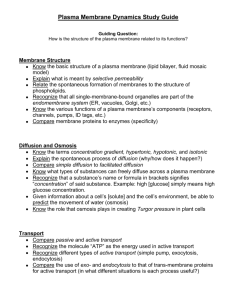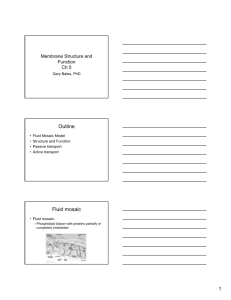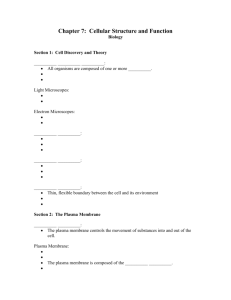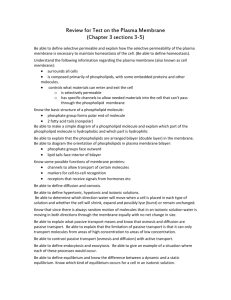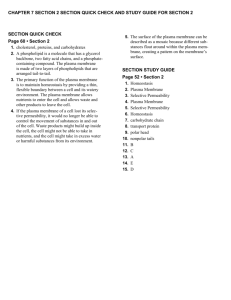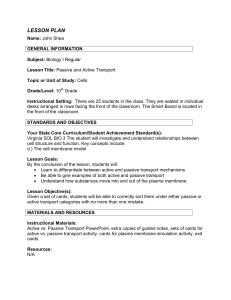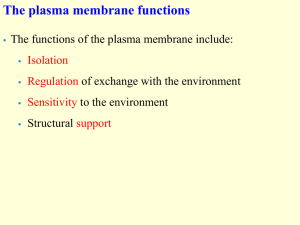Study Guide
advertisement
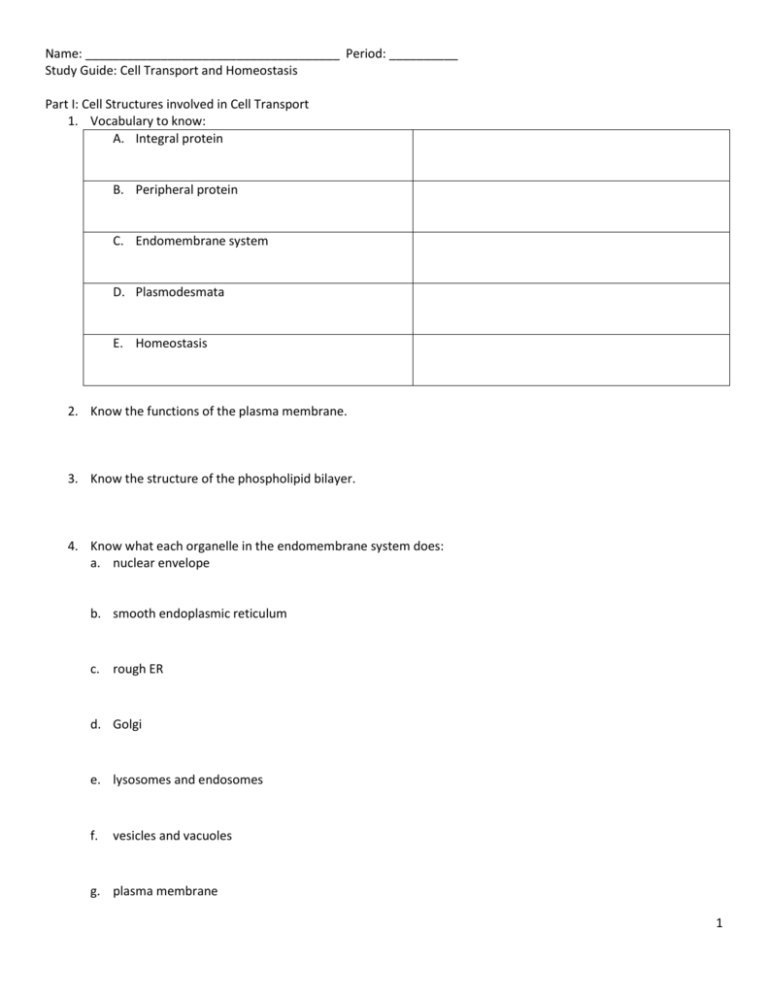
Name: _____________________________________ Period: __________ Study Guide: Cell Transport and Homeostasis Part I: Cell Structures involved in Cell Transport 1. Vocabulary to know: A. Integral protein B. Peripheral protein C. Endomembrane system D. Plasmodesmata E. Homeostasis 2. Know the functions of the plasma membrane. 3. Know the structure of the phospholipid bilayer. 4. Know what each organelle in the endomembrane system does: a. nuclear envelope b. smooth endoplasmic reticulum c. rough ER d. Golgi e. lysosomes and endosomes f. vesicles and vacuoles g. plasma membrane 1 5. Know the functions and structure of cytoplasm and cytoskeleton. 6. Know why plant cells have plasmodesmata. 7. Review how homeostatic mechanisms maintain stability in living organisms, for example how to get rid of the burn after lactic acid fermentation or how they body cools itself down. 8. Sample question: Chemical Discovery: A scientist formed Chemical X in a laboratory. The material was then analyzed by other scientists. Analysis showed that the chemical was composed of long chains of repeated copies of CH2 molecules. 9. 104831 A researcher noticed that a similar CH2 molecular structure was also located in the plasma membrane of an animal cell. This CH2 molecular structure contained a negatively charged phosphate group. Which statement best describes the primary function of the CH2 and phosphate molecular structure located in the plasma membrane shown in the diagram above? A. It contains the genetic information needed for protein production. B. It catalyzes specific chemical reactions in the cytoplasm of a cell. C. It stores the energy that a cell needs to perform various life processes. D. It allows a cell to regulate the movement of materials into and out of a cell. 2 Part II: Cell Transport- Passive and Active 1. Vocabulary to know: F. Active transport G. Cytolysis H. Diffusion I. Endocytosis J. Equilibrium K. Exocytosis L. Facilitated diffusion M. Hypertonic N. Hypotonic O. Isotonic P. Osmosis Q. Passive transport R. Plasmolysis S. Solute 2. Know some of the molecules that can move across the plasma membrane freely. 3 3. Review your Lesson 2 summary chart: a. Know if active transport or passive transport requires the input of energy for it to occur. b. Know what type of transports move from high to low concentration and what types of transport move from low to high concentration. c. Know types of passive transport and types of active transport. 4. Understand and be able to explain how the sodium-potassium pump works. 5. Be able to explain how electrochemical gradients are formed. 6. Know what molecule provides the energy needed for active transport processes. 7. Refer back to your ‘Cell Review Worksheet’ and review the osmosis diagrams. 8. Know how fish deal with osmotic pressure. 9. Know how plants deal with osmotic pressure. 4


